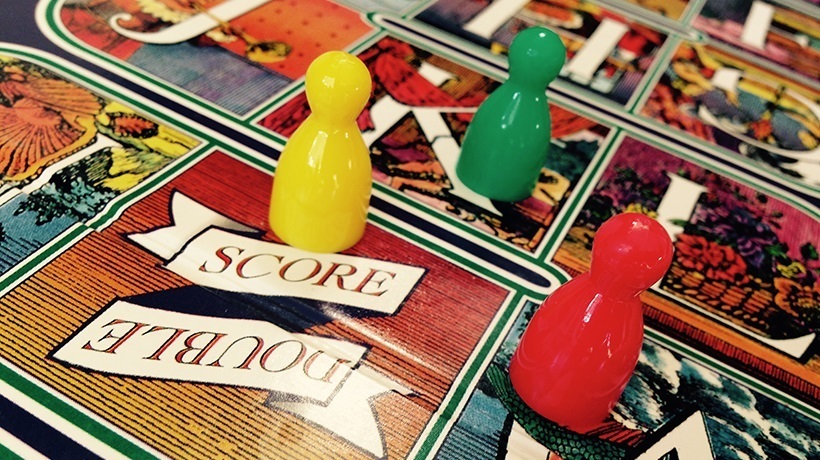3 Well-Known Educational Concepts To Help You Gamify Your Learning
When was the last time you did a course and why did you do it? Was it the Spanish class you enrolled in because you were planning to travel to South America, or was it the First Aid certificate you had to do (again!) so that you could keep your job?
As adults, our motivation to learn is driven by both intrinsic and extrinsic factors. In the examples above the desire to learn Spanish comes from the intrinsic motivation of the prospect of travel, while completing the First Aid course is motivated by extrinsic factors such as job security. Ideally it’s good to have a balance of both – intrinsic motivators to inspire us to learn and extrinsic factors to get us over the finish line.
Intrinsic and extrinsic motivators are some of the educational concepts behind gamification (gamification refers to the incorporation of game-based elements into learning design). Game-based elements in learning can include progress bars, points, leaderboards and badges (extrinsic motivators), but can also include more complex elements such as narrative, mystery, elements of chance and risk.
Gamification is (still) one of the current buzzwords of the eLearning industry and with good reason. For too long eLearning design has been linear and text-based: In other words, pretty boring. How often does the first page of an eLearning course contain a list of course objectives? And how long does it take for the learner to switch off? Game-based elements can help Instructional Designers lift eLearning out of this tedium.
It doesn’t have to be Minecraft or Pokemon. It doesn’t even have to be very technical or time-consuming to design. Let’s look at 3 educational concepts behind gamification and some simple ways in which you can apply these concepts to gamify your learning.
1. Scaffolding
Learners need different levels of support depending on their competence.
The educational concept of scaffolding is the application of tailored support to move the learner from their current level of learning to the next.
Gamification examples:
- Visible indicators of progress.
Use progress bars, levels, badges, or achievements to let the learner know how they are going and to maintain motivation. - Tailored assistance.
Give hints or clues exactly when the learner needs them: e.g. give a prompt after 3 incorrect attempts at a question. - Gradually remove the support.
Remove prompts as the learner progresses through the course.
2. Self-Determination Theory
Learners are motivated by psychological needs of competence, autonomy, and social relatedness through both external and internal factors.
Components of the motivational theory of self-determination explain how gamification elements keep learners engaged. The theory of self-determination has 3 core elements:
A. Competence
Learners are engaged when they feel competent.
Gamification examples:
- Learning ‘chunks’: Deliver content in small chunks.
- Rewards: Give learners a sense of mastery and competence through points or badges after completing or understanding the ‘chunk’ of content.
- Star ratings: Use a star rating system to give feedback as to how well learners have understood the content.
- Collecting resources: Provide interesting facts or concepts that learners can ‘collect’ to win points or recognition.
- Leaderboards: Create a daily leaderboard challenge to maximize the number of winners over time, therefore improving the sense of achievement for the overall learner group.
- Learning levels: Progress the content from easy to most difficult, keeping learners on the ‘edge of competence’.
B. Autonomy
Learners are engaged when they feel in control.
Gamification examples:
- Provide choice: Allow learners to make decisions that have an impact, e.g. provide a choice of case study, or whether to complete a 10-point or 20-point question.
- Encourage curiosity: Start the module with a question instead of a long list of learning objectives.
- Create mystery: Give learners incomplete information or a mystery to solve and provide instructions on how to find the missing pieces.
C. Psychological Relatedness
Learners are engaged when they feel connected.
Gamification examples:
- Rewards: Allow learners to celebrate their success through rewards, leaderboards and badges.
- Social connection: Allow learners to share these rewards through social media channels.
- Competition and cooperation: Set up groups or teams to compete against each other in a quiz challenge. Promote cooperation within the team and competition between the teams.
- Narrative: Create characters, avatars and scenarios that learners can identify with.
Intrinsic And Extrinsic Motivation
The motivational theory of self-determination makes a distinction between intrinsic (internal) and extrinsic (external) factors. Gamification applies both intrinsic and extrinsic motivators, however, critics suggest that it relies too heavily on extrinsic factors. The trick is to deploy both into learning design, as this increases motivation for a larger range of learners.
Gamification examples:
- Extrinsic motivators: Set up a leaderboard, a point or reward system. Use certificates or badges to encourage learners towards their goal.
- Intrinsic motivators: Provide explanatory feedback on completion of tasks or actions. Give learners a sense of control over their own learning. Use a combination of natural (e.g. a door closes if they click on it) and artificial (e.g. popup text) feedback techniques.
3. Distributed Content Delivery
Learners have better recall if learning content and tests are spaced out over time.
A distributed approach to learning is where the learning content is spaced out over time and the learner is quizzed immediately after the content has been delivered. This reduces learner fatigue and leads to better recall.
Gamification examples:
- Timed release: Keep modules short and release them over time, not all at once. If your content is presented as a game (e.g. a mystery the learner has to solve), then space out the clues over time to increase engagement.
- Knowledge quiz: Ask learners to complete a quiz challenge immediately after working through a piece of content.
- Daily prompts: Use mobile notifications to prompt learners to complete a mini-module every 24 hours.
If you’re interested to learn more about the gamification of learning I recommend checking out Karl Kapp’s gamification tutorial on Lynda.com.









